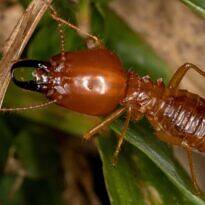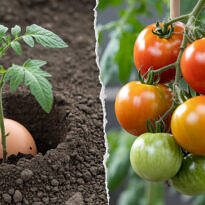
In this series of articles, you’ll delve into the realm of plant hormones and their practical application in plant production. To begin, let’s grasp the concept of plant hormones. In plants, hormones play a vital role in regulating growth and development. They’re also referred to as phytohormones to differentiate them from the animal hormones we’re familiar with. Our knowledge of plant hormones is relatively recent, and much remains unknown. Nevertheless, it’s likely that numerous discoveries in this field will unfold in the coming years.
The first set of hormones we’ll explore is the auxins. Auxins were the initial growth hormones under scrutiny, and their discovery credits Charles Darwin and his son, Francis Darwin. They exposed various plants to light originating from a single direction and observed that the shaded side grew more than the illuminated side, causing the plant to bend toward the light source.
Gradually, we’re uncovering the functions of these hormones. The primary role of auxins is to trigger growth by cell elongation. Furthermore, these hormones exhibit a phenomenon called phototropism—they move away from the light source. This phenomenon explains why plants receiving light from one side tend to grow skewed towards the light. The shaded side receives more growth hormone, causing the plant to bend towards the light.
Understanding this property of auxins reminds us to regularly rotate plants near windows to prevent uneven growth.

Another pivotal role of auxins involves apical dominance. Plants respond with increased growth to rising auxin levels until reaching a certain point. Beyond this point, the effect reverses—growth is inhibited. An optimal auxin level is necessary for favorable growth.
Auxins are produced in all plant organs, with higher production in meristematic regions, such as growth buds. Among these buds, the apical bud of the stem produces the most auxin. This excessive auxin diffuses downward, inhibiting lateral bud growth, inducing dormancy. This is apical dominance. When we prune the main bud, the plant stops growing vertically, allowing lateral buds to grow freely. This knowledge forms the basis of gardening techniques like pinching, as well as various shaping and training methods for both small herbaceous plants and fruit-bearing trees. Pruning the apical bud of fruit trees, for instance, yields lower branches, making harvesting easier. This concept also applies to techniques such as propagation by cuttings, air layering, bonsai, and espalier.
Beyond growth and apical dominance, auxins play crucial roles in stem, root, fruit, and seed development. Among auxins, the most prevalent in the plant kingdom is Indole-3-Acetic Acid (IAA). Various natural forms exist, and due to their relatively simple chemical structure, scientists synthesized molecules with auxin activity, like 1-Naphthaleneacetic Acid (NAA) and Indole-3-Butyric Acid (IBA). These synthetic auxins are widely used as rooting hormones, often sold in powder form. They aid in the rooting of cuttings and air layers. Successfully propagating plants that would otherwise be challenging, like the jabuticaba tree, becomes more achievable with these synthetic auxins. Jabuticaba cuttings notoriously take a long time to root naturally, but with synthetic auxins, the process is faster and more successful, resulting in higher success rates. These synthetic auxins are also instrumental in facilitating root development in numerous other species.

Auxins also play a vital role in in vitro multiplication, guiding root and leaf development. Their influence extends to parthenocarpic fruit growth—fruit development without pollination—applied through auxin use. Seedless fruits like watermelons, tomatoes, and grapes can be produced this way. Additionally, auxins aid in chemical thinning, promoting larger and more consistent fruit production in citrus, apple, pear, and olive trees. Instead of experiencing alternating heavy and light yield years, these trees yield more consistently with higher-quality fruit.
Synthetic auxins like 2,4-Dichlorophenoxyacetic Acid and 2-Methoxy-3,6-Dichlorobenzoic Acid (commercially known as Dicamba) are employed as herbicides. These herbicides stimulate excessive plant growth to the point where the plant can’t sustain itself, leading to its demise. They are selective herbicides, less impactful on grasses. Applying such auxins to a lawn infested with clover, for example, would kill the clover while sparing the grass. Nevertheless, these auxins can pose environmental and toxic risks. While we comprehend their function, it’s crucial to seek guidance from qualified agronomists before intervening in nature, as misuse can harm plants, our health, and the environment.
In the upcoming article of this series, we will delve into gibberellins. Until then.






